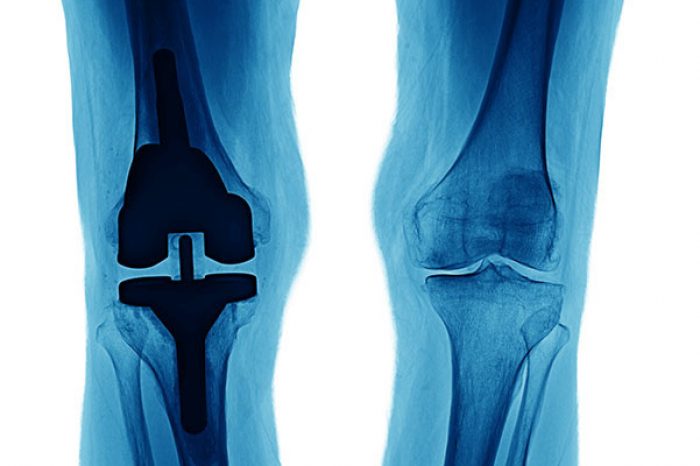
Knee osteoarthritis (OA) is a leading cause of joint pain and disability worldwide. It occurs due to cartilage degeneration, often driven by inflammatory processes. One promising biological treatment is Alpha-2-Macroglobulin (A2M), a naturally occurring plasma protein with powerful anti-inflammatory and cartilage-protective properties [LaMarre et al, 1991; Santos et al, 2016].
This article explores A2M’s mechanism of action and its potential as a therapeutic option for knee osteoarthritis.
A2M is a broad-spectrum protease inhibitor found in human blood plasma. It plays a crucial role in regulating inflammatory processes and inhibiting catabolic enzymes that contribute to cartilage breakdown [Sun et al, 2023; Crookston et al, 1994; Feige et al, 1996; Dzhugashvili et al, 2014; Demirag et al, 2004; Demirag et al, 2005].
A2M functions by trapping harmful enzymes, preventing them from degrading essential joint structures [Wang et al, 2014; Sun et al, 2023; Mathew et al, 2015].
Inflammation is a key driver of cartilage destruction in OA. Research has shown that interleukin-1 (IL-1) and nuclear factor kappa-light-chain-enhancer of activated B cells (NF-κB) are two major contributors to joint inflammation. IL-1 stimulates the production of catabolic enzymes such as matrix metalloproteinases (MMPs), which degrade cartilage, while NF-κB regulates the inflammatory response, exacerbating tissue damage [Wang et al, 2014; Sun et al, 2023; Dzhugashvili et al, 2014; Demirag et al, 2004; Demirag et al, 2005; Mathew et al, 2015; Claassen et al, 2011].
Recent studies have demonstrated that A2M blocks IL-1 and NF-κB pathways, reducing inflammation and cartilage degradation. By neutralizing these inflammatory mediators, A2M helps to preserve cartilage integrity, potentially slowing OA progression and alleviating symptoms. [Wang et al, 2014; Sun et al, 2023; Dzhugashvili et al, 2014; Demirag et al, 2004; Demirag et al, 2005; Mathew et al, 2015; Claassen et al, 2011].
Inhibition of Catabolic Enzymes: A2M captures and neutralizes MMPs and aggrecanases, enzymes responsible for cartilage degradation.
Blocking IL-1 and NF-κB Pathways: A2M downregulates inflammatory signaling, reducing cytokine production and inflammation.
Cartilage Protection: By preventing enzymatic breakdown, A2M preserves the extracellular matrix, essential for joint function.
Potential for Tissue Regeneration: Some research suggests A2M may promote tissue healing, further supporting its use in OA management.
A 2022 study published in the Journal of Orthopaedic Research highlighted A2M’s role in inhibiting inflammatory mediators in chondrocytes. The study found that A2M effectively blocked IL-1 and NF-κB pathways, leading to reduced inflammation and potential cartilage preservation. These findings provide strong evidence for A2M as a viable biologic treatment for knee OA [Sun et al, 2023].
A2M therapy involves extracting the patient’s blood, isolating the A2M protein, and injecting it directly into the affected joint along with platelet rich plasma (PRP). This targeted approach delivers a high concentration of A2M into the joint.
Corticosteroids: While effective in reducing inflammation, steroid injections offer short-term relief and may accelerate cartilage degeneration with repeated use.
Hyaluronic Acid (HA) Injections: HA provides lubrication and cushioning but does not directly address inflammation or cartilage degradation.
Platelet-Rich Plasma (PRP): PRP contains growth factors that promote healing, but it does not specifically target inflammatory cytokines in the same way that the A2M molecule does.
Further clinical trials are needed to establish standardized protocols, optimize dosing, and evaluate long-term efficacy.
A2M targets inflammatory pathways with the hope of down regulating inflammatory pathways to protect cartilage from degradation.
(781) 591-7855
20 Walnut St
Suite 14
Wellesley MA 02481
Adductor longus selective tenotomy is a modern surgical treatment for chronic groin pain that offers faster recovery and better outcomes than traditional full release surgery. The adductor longus, an inner thigh
Read MoreDiscover how ultrasound helps diagnose plantar fat pad atrophy, a leading cause of ball-of-foot pain. Learn about symptoms, thickness cutoffs, and why early detection matters for relief.
Read More